Luna-Lager bunker
Last traces of a labor camp
This time, however, one of the metal plates at the back had been ripped away by some determined soul. I couldn’t believe it. It was just a matter of hopping in!
“You wanna go in?” I asked the young fella, who’d wanted to go to the forest in the first place.
“Yeah,” he replied without hesitating. He’s up for anything, that fella.
I went first, in through the gap over the rusted wartime-era radiator, and then lifted him in.
“It’s dark!” he said.
Yes, young man, you’ll get to learn that bunkers are indeed usually very dark.
Luckily I’d brought a torch and we set off to explore it. Bricks, rubble and rubbish littered the floor, as rubbish likes to do. Two chambers ran down its length, one either side of a central passageway.
Old rusty pipes hung from the ceilings and converged at what seemed a fireplace in the middle of the passageway, flanked by an odd-looking assortment of wheels, valves and levers.
The chimney went straight up, so I presume fires were lit here and these heated the water that heated the radiators at the bunker’s extremities. There wasn’t much else but for the aforementioned litter littering the place. And as I mentioned before, it was dark.
It was only afterward that I learned its history was even darker. The bunker is all that remains of the second biggest labor camp in Berlin, operated between June 1940 to April 1945.
It was named “Luna-Lager” (Luna Camp) after the former Lunapark amusement park, which moved to Schönholzer Heide from nearby Halensee in 1933. It must have been someone’s sick joke to name a prisoners’ work camp after a fun park.
The Heide (moor, heathland or heath) had been popular from the end of the 19th century among Berliners escaping the developing city for recreation, with pubs, restaurants and a shooting range.
Its story began in 1751 when Prussian queen Elisabeth Christine, Frederick the Great’s wife, had mulberry trees and fruit trees planted here, and avenues created so people could admire them. It became known as the “Queen Plantation” and belonged to her Schönhausen Palace summer residence.
She died in 1797 and by the time another 100 years had passed the Heide was a much-loved recreational destination. (There are some great pictures of it from times long gone here.)
Health resorts for women and children were built around 1900 to treat tuberculosis, anemia, weak nerves, stomach disease and rickets. Separate incidences, I hope. Tennis courts and football pitches were added in the 1920s and a sleigh slope was added in 1930.
Then came the fun park. Lunapark was renamed Traumland (Dreamland). It was an early version of Spreepark, with loads of attractions, a Ferris wheel and even a rollercoaster called the Himalaya-Bahn. The war put an end to the fun, however, and the whole thing was closed down.
That’s when it became a labor camp. Forced laborers – mostly from Poland, France, Belgium, Croatia, Serbia and “Ostarbeiter” from the Soviet Union – were used to make weapons for the Nazis’ war effort at the behest of the Deutschen Waffen- und Munitionsfabriken (DWM, the German Weapons and Munitions Company).
“On Feb. 19, a very cold morning, the German army enclosed Grabowiec. A German soldier came to every house and gave us 15 minutes’ time. They sorted us then in Zamość. The young and healthy came to Germany, to work … the older people, also those who were sick, were brought straight away to Oświęcim, to Auschwitz. I came with my parents to Berlin then, and we were brought to the munitions factory,” Anna Buczak recalled.
DWM used prisoners to their benefit in many locations. The Berlin factory was at Eichborndamm in Borsigwalde, also in the north of the city. The “employees” had to work 12-hour shifts for six days a week there.
“The work began at 6am and we had to get up at 4 already, because we had to go four stations withn the S-Bahn and because there was so many of us – Russians, French, there were masses of people – that we had to go an hour earlier so there was room on the S-Bahn for the Germans later,” remembered Jadwiga Adamiak. “And so we were at the factory at 5 and then we waited for an hour so we could start working at 6.”
Many of the workers died from malnutrition and disease, and those who didn’t very often perished in bombing raids due to a lack of suitable protection.
Joseph Lenzel, a priest from Niederschönhausen, attempted to help them and for this heinous crime he was arrested on Jan 7, 1942 and brought to the concentration camp at Dachau. He lasted until July 3 before his murder was completed.
There were up to 2,500 laborers by the end of 1942, each identified according to background. Polish workers were marked with a “P” while “OST” identified the Soviets. The Nazis liked to keep their racism labelled.
More than 100 prisoners, including 12 infants or small children, died at the camp between 1942 and 1945, before the survivors were freed by the Red Army. To be honest, I’m surprised more weren’t killed.
Thousands of Soviet soldiers died in the battle for Berlin between April 16 and May 2, 1945 – perhaps more than was necessary – and one of three huge memorials to fallen Red Army soldiers was built at Schönholzer Heide.
It’s huge in true Soviet memorial style and it reminds Germans that “they gave their lives for your future.” Be grateful for your heroes. Strangely, it doesn’t mention the orgies of rape and violence that Soviet troops inflicted on the surviving civilian population.
The memorial, which was completed in 1949, is still there of course, as is a small graveyard for 350 people who died locally in Pankow between April 14 and June 22, 1945. Altogether 180 civilians, 146 German soldiers, 17 refugees and seven foreign workers from Luna-Lager are buried here.
The bunker was one of three apparently. The other two were blown up. Most wartime bunkers met an explosive fate. I don’t know why this one was spared. But it’s the only structure in the whole of Schönholzer Heide to have survived since wartime. Everything else was destroyed.
Now the park is home to joggers, cyclists, picnickers and weekend revelers. They appreciate the open space, the grassy knolls, the wooded areas – Schönholzer Heide is a fine park. Forget your past. Be grateful.
LOCATION AND ACCESS (HOW TO FIND GUIDE)
- What: Wartime bunker, all that’s left of the former Luna-Lager labor camp at Schönholzer Heide, now a grassy, half-wild and quite pleasant 35-hectare park.
- Where: Volkspark Schönholzer Heide, 13156 Berlin, Germany
- How to get there: S-Bahnhof Schönholz is the closest train station, served by the S1 and sometimes a couple of others. Pankow is not far away either. If you enter from Herrmann-Hesse-Straße, the bunker is in the southwestern corner of the park. You’ll pass it if you come from S-Bahnhof Schönholz. Here’s a map. It’s very close to the abandoned Iraqi embassy to East Germany, should you also feel like visiting that.
- Getting in: At the back of the bunker, facing the wall, is the opened hatch through which you can swing yourself in. It’s quite easy. A three-year-old can do it.
- When to go: If you want to see it and go for a walk around the park it’s probably best to go during the day. If you’re having a party then by all means go at night.
- Difficulty rating: 2/10 Very easy. You could almost say it’s a stroll in the park.
- Who to bring: This is one abandoned site that is suitable for kids. So feel free to bring the little people along too. Bring a football or kite or something in case they get bored quickly. Otherwise bring your friends if you want to have a party.
- What to bring: A crate of beer and a picnic basket – preferably with food in it – if you want to have a picnic or party. I recommend it actually, especially now, with the weather the way it is. Bring a barbeque if you want to cook stuff, and a blanket to put on the grass if you want to picnic like a German. Germans always bring blankets to sit on. I don’t know why. Bring a torch to explore the bunker – it’s dark as I mentioned before – and a camera if you want to capture the moments.
- Dangers: The bunker itself seems pretty sound. I mean, it’s still standing after all these years and bombardments. Still, best to be careful. Try not to decapitate yourself or bang your head when you’re going in. There are no issues with security or police, so no need for any worries there.
More stories of Nazi persecution
Kraftwerk Vogelsang
Kraftwerk Vogelsang is a powerless power plant. People gave their lives building it and fighting over it. Now that they’re gone, nobody wants it at all.
SS Bakery
The SS Bakery only went bust when the Nazis did. They forced prisoners from nearby Sachsenhausen to make bread to keep other concentration camps going.
Garbáty Zigarettenfabrik
Garbáty’s Zigarettenfabrik was brought to its knees by Nazi persecution. East Germany appropriated the cigarette factory till that ended too.
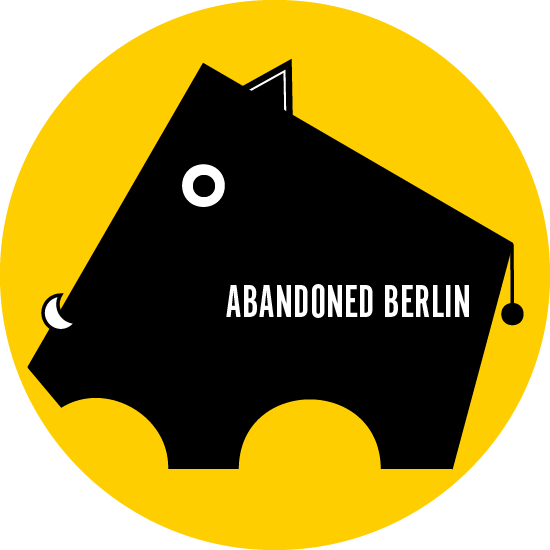
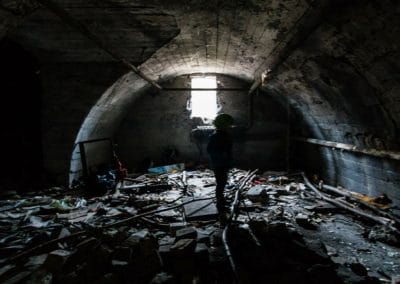
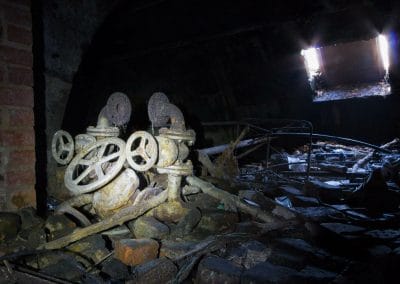
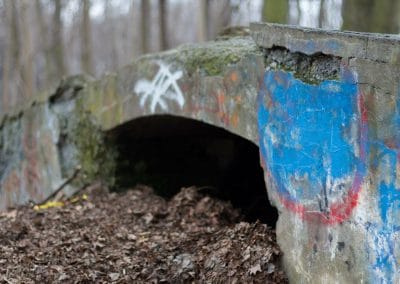
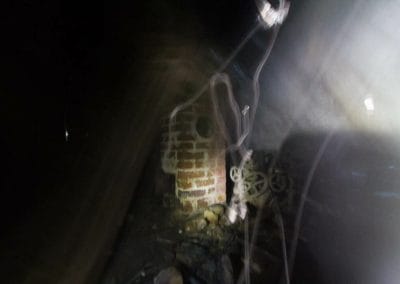
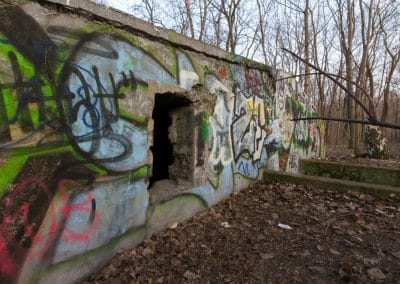
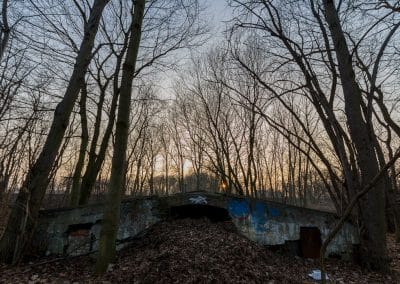
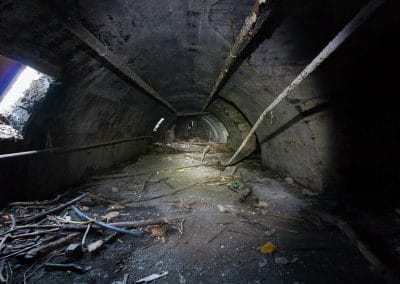


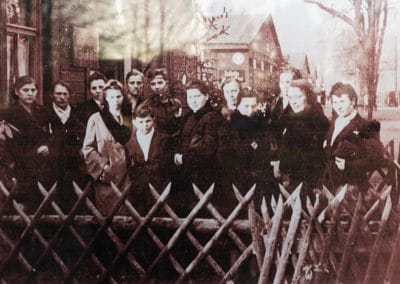
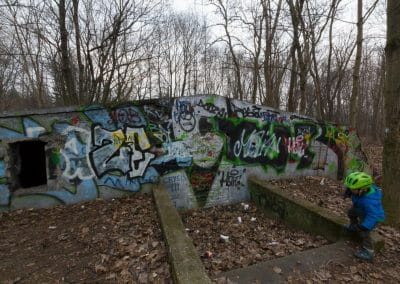
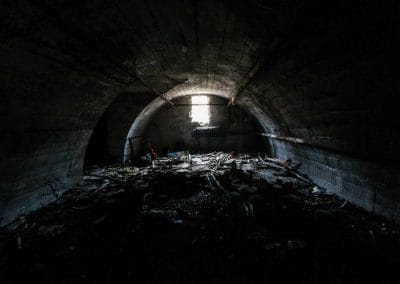
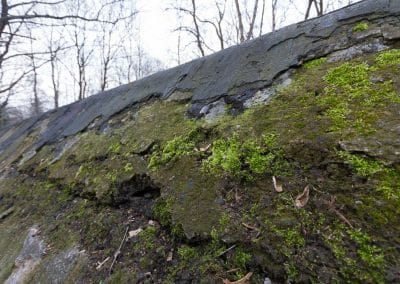
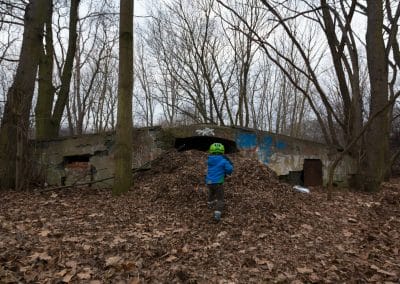
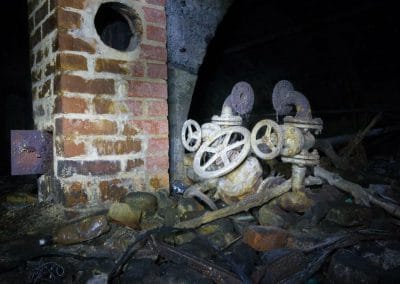
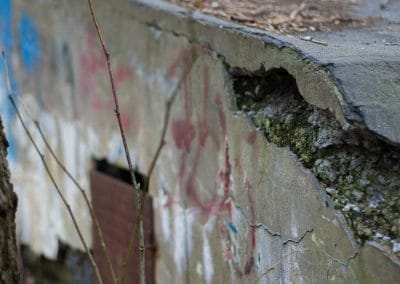
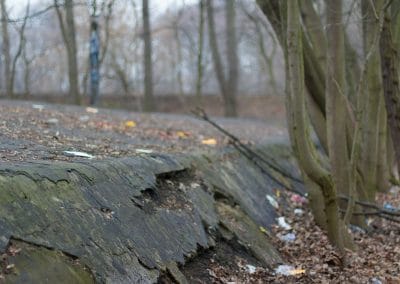
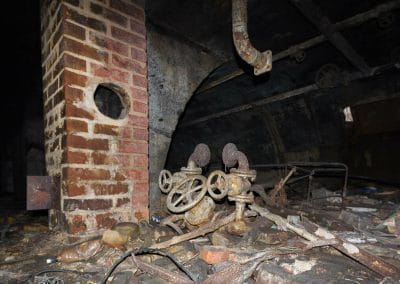
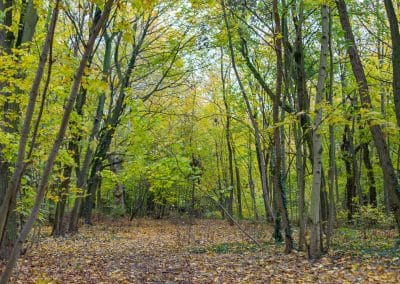
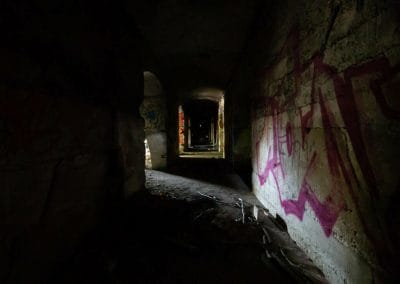
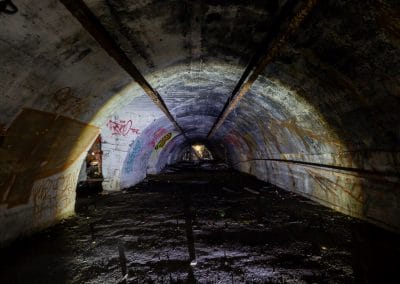
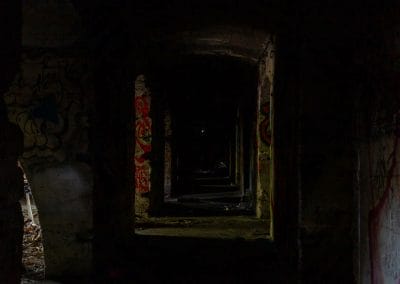

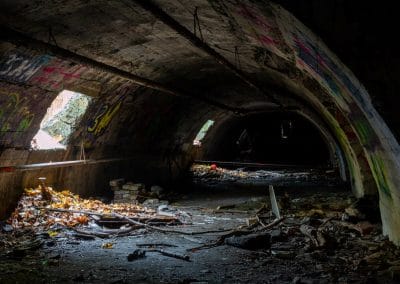
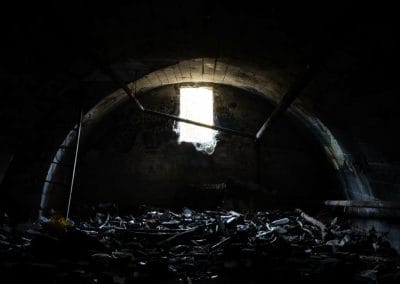




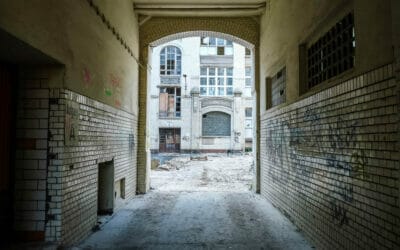
An absolutely fascinating post.
I went here last night around midnight with a brave friend and a lot of flashlights. We walked around the entire bunker and could not find a way in. It looks like the hatch you were talking about has recently been bolted shut. There were some shiny new screws securely fastening a large metal plate over the entrance.
Sounds like it alright. There were no shiny screws when I was there. Thanks for the update.
Wow, that’s look pretty scary, a shame that they closed it.
Went by again today. The hatch is still there, and still open.
Just to keep it updated. Still open and easy as of Sep. 14, 2014.
But bring a torch! A powerful one. Not your cell’s flash or a bike led light. Or else you might hit your head on a rusty pipe.
Went yesterday and it’s still open.
Still open 1 Nov 2014. Large bricks scattered on the floor, watch your toes. I took some long-shutter pictures in the dark as well, see if I can bring them up somewhere.
went by today, hatch still open~
enjoy it
Went there tonight still open… now need to go in there in day time to see lol
The entrance by the path is shut not the one behind it
Still open as of April 13, 2016
Hello,
Is this on the other side of the Verkehrsschule?
I can´t really figure out the exact spot.
Thanks,
Nick
Still open as of October 8th, 2017
still open 27.02.2018
went there about 2 or 3 weeks ago. it took me few minutes to find the bunker and then no problems with getting in. there’s a hole wide open inviting to jump inside. the whole bunker tho, it seems like someone cleaned it. there’s litter in the corners of it, but the center is cleaned up. ofc I was looking up and down no to break any bones out of habit, but honestly there was no need to.
Was there last week. No problem to go inside. It is very easy. There’s a tent in the bunker which seems to belong to a homeless man.
Any news about this, I read it caught fire a year ago, is it still accessible?
Yes, it is!
That’s awesome! I’ll go check it out on saturday 🙂
Went there today and we couldn’t find a way in.
This has now been properly sealed up with metal plates/concrete.
I was here today, along with the Iraqi embassy and the Berlin Wall. There is a fence surrounding it, but it is low and easy to climb. There is a hole in a window on the back that is easy to crawl through. Thank you so much for telling me where this is.
The entrance at the back has been closed. Not possible to get in any longer.
Sealed up 🙁 there’s some small gaps at the front that maybe a 5yo kid could crawl through, but not an adult
The fence is easy to climb, but the bunker is still sealed up with no access that I could find.
Please don’t try to access the bunker any longer. It was sealed up because (like similar structures) it’s used by strictly protected bats as a winter hibernaculum. Please bear in mind that bats are very likely to die when disturbed regularly, so please don’t enter these structures, especially from October to the end of March.
Thank you. We love bats. Will put a note in the post proper so people are aware. Thanks again. 🦇